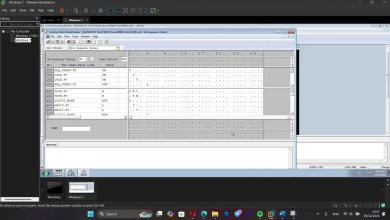(HVA1) Virtualization Overview – Server Virtualization
20240619 144153
Virtualization
What is Virtualization?
•Create a software-based—or virtual—representation of applications, servers, storage and networks to reduce IT expenses while boosting efficiency and agility.
Virtualization
•Virtualization can increase IT agility, flexibility and scalability while creating significant cost savings. Greater workload mobility, increased performance and availability of resources, automated operations – they’re all benefits of virtualization that make IT simpler to manage and less costly to own and operate.
Benefits of Virtualization
•Reduced capital and operating costs.
•Minimized or eliminated downtime.
•Increased IT productivity, efficiency, agility and responsiveness.
•Faster provisioning of applications and resources.
•Greater business continuity and disaster recovery.
•Simplified data center management.
•Availability of a true Software-Defined Data Center.
Types of Virtualization
Server Virtualization
Desktop Virtualization
Network Virtualization
Application Virtualization
Storage Virtualization
User State Virtualization
Presentation virtualization
1. Server Virtualization
Server virtualization enables multiple operating systems to run on a single physical server as highly efficient virtual machines.
Key benefits include:
Greater IT efficiencies
Reduced operating costs
Faster workload deployment
Increased application performance
Higher server availability
Eliminated server sprawl and complexity
To enable Virtualization technology goto BIOS SETTING enable Intel Virtualization Technology
Server virtualization:
Create and run multiple computer operating systems on a single physical computer
Host servers share resources with all virtual machines
Hosted on Microsoft Hyper-V
Allows you to detach the computer hosting a service or role from the hardware on which it runs
Almost all server workloads can now run on virtual machines
Use server virtualization to reduce the number of physically deployed servers, and to optimize resource utilization
Hypervisor:
-virtualization platform
-it virtualize hardware resources
-create and run Virtual Machine
-hypervisor decouples/detach virtual machine from physical machine
-hypervisor is firmware which create virtual resources to create and run virtual machines on physical machine
-loosely couple
Hypervisors: Type 1
VMware – ESXi – vSphere —latest 8
Microsoft – Hyper-V — 2019
Citrix – XenServer — latest v7.1
Proxmox – Proxmox-VE
Redhat – RHEV
Hypervisors with in OS as feature
Hyper-V – Windows server 2008 x64, 2008R2, 2012/R2,2016,2019,2022
Windows 8,8.1,10,11 Pro and Enterprise x64
KVM/QEMU – Linux –from Enterprise Linux 6 ex. rhel6,centos6..,
Type 1:
Bare metal virtualization
Hypervisor directly installed on the Hardware
Server virtualization
Provide centralized access
VMs in server can access from network
Type 2:
Hypervisor application installed on Physical machine OS
It isolated from network access
Hypervisor applications
VMWare Workstation, Player
Oracle VirtualBox
MS VirtualPC – not availble
————————————————————————
[ad_2]
source



